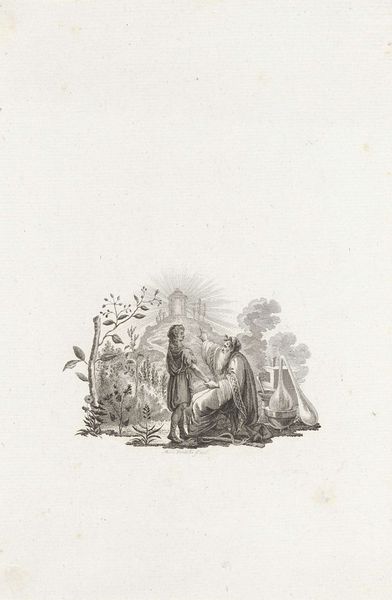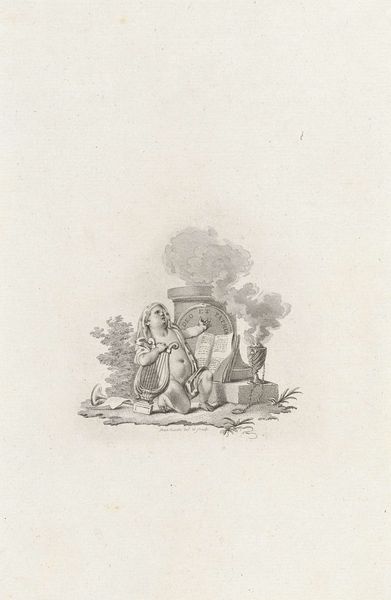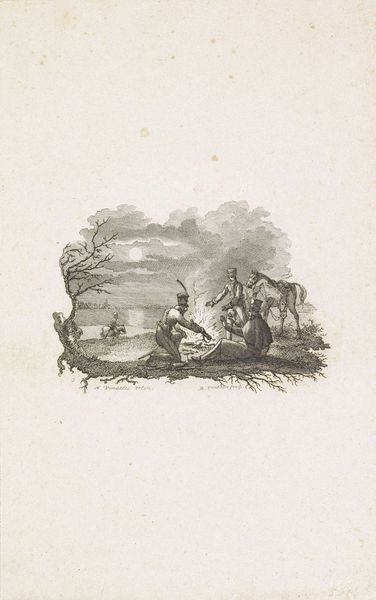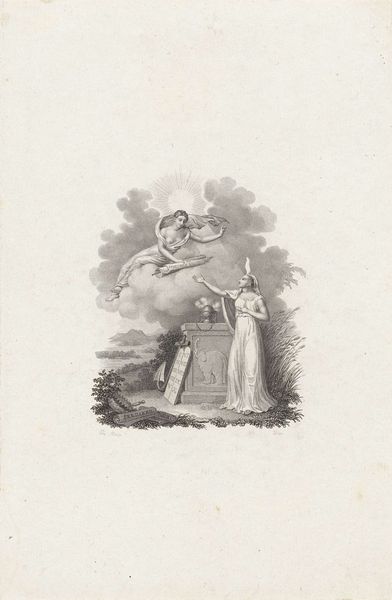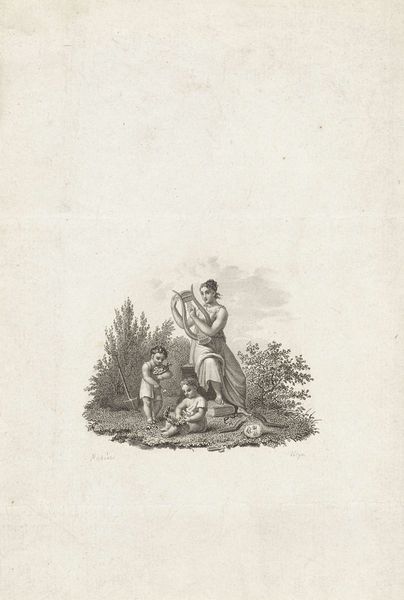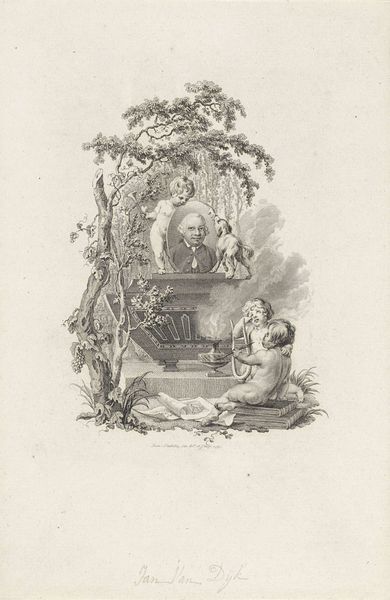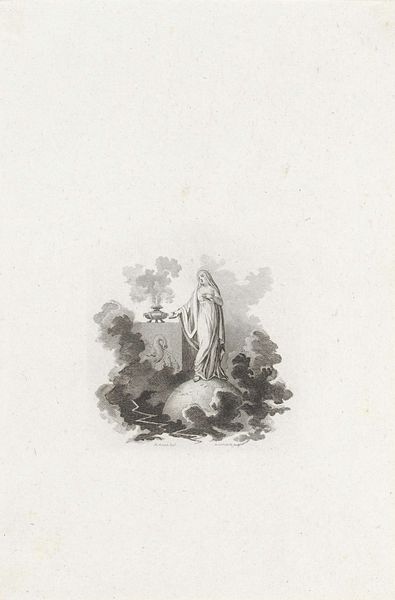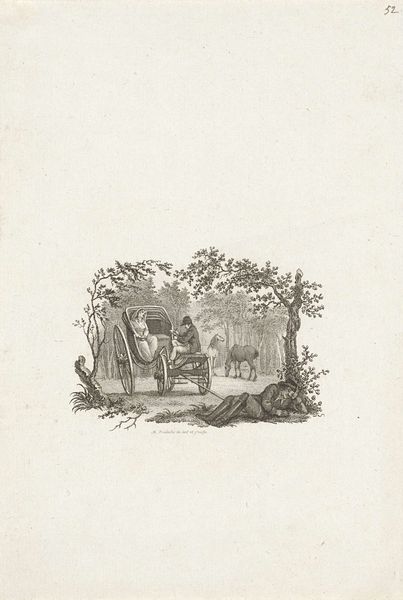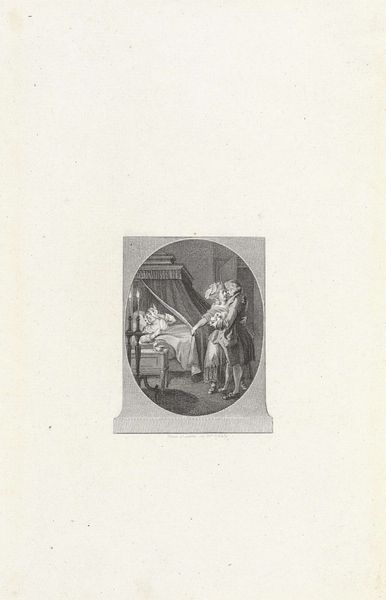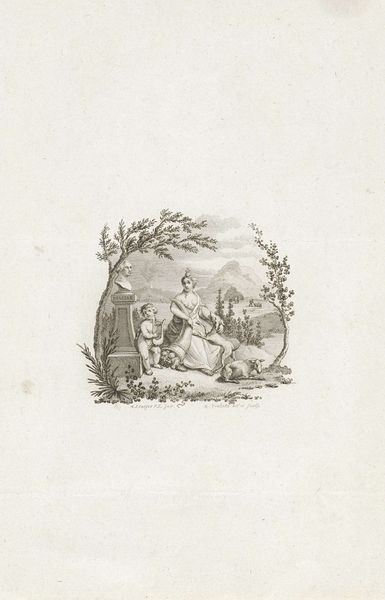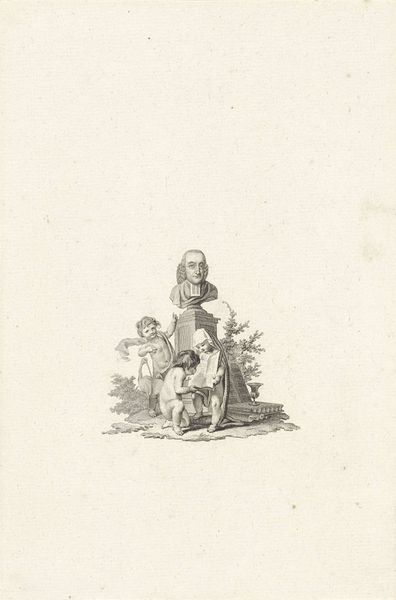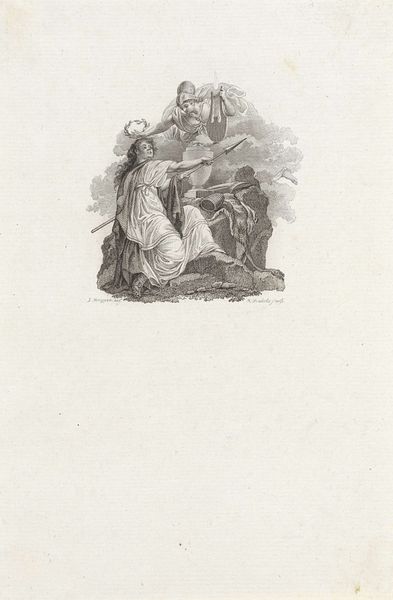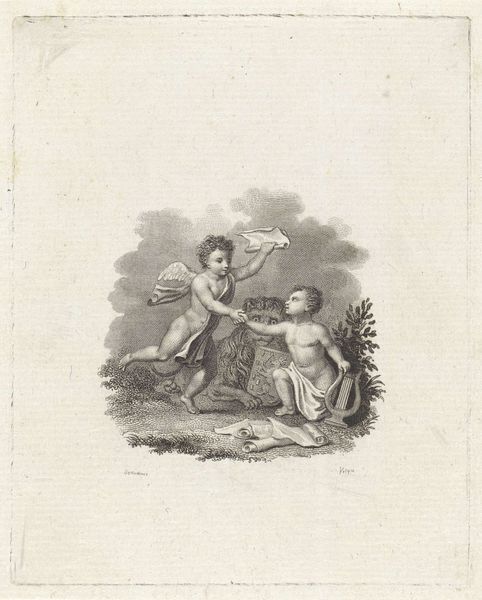
Vignet met een putto in het licht en een putto met een lantaarn in het donker 1751 - 1816
0:00
0:00
Dimensions: height 250 mm, width 165 mm
Copyright: Rijks Museum: Open Domain
Editor: This engraving, "Vignet met een putto in het licht en een putto met een lantaarn in het donker," made sometime between 1751 and 1816 by Reinier Vinkeles, features two cherubic figures and some pretty dramatic lighting. I'm curious, what broader themes or meanings do you see reflected in this work? Curator: This piece speaks volumes about the social structures of its time, doesn't it? The dramatic chiaroscuro, with one putto bathed in light and the other shrouded in darkness, might reflect the sharp divisions in 18th-century society – the enlightened versus those kept in the shadows of ignorance or poverty. Notice the putto with the lantern: does he seem to be seeking something, or perhaps leading someone out of the dark? Editor: That's an interesting idea. I hadn’t considered that. It does feel like there is some level of intentionality behind the darkness; is that part of the allegory? Curator: Precisely! Allegory was a powerful tool in this era. And how might we interpret the cross on the pedestal, given this interplay of light and darkness? Perhaps it alludes to the role of religion in either illuminating or obscuring truth, depending on one’s perspective. Editor: So, the artwork becomes less about a simple contrast of light and dark, and more about societal awareness? Curator: Exactly! By situating these seemingly innocent putti within a context of social and religious critique, Vinkeles invites us to question the power structures that shaped his world – and continue to influence our own. What does it make you think of, seeing it in today’s world? Editor: That the same light-dark dichotomy continues today in very much the same way! I definitely see it in a new way now. Curator: And hopefully, that inspires further investigation into these historical narratives!
Comments
No comments
Be the first to comment and join the conversation on the ultimate creative platform.
